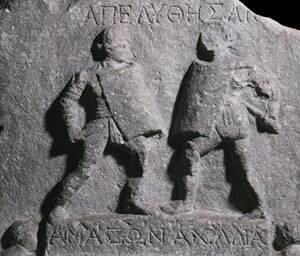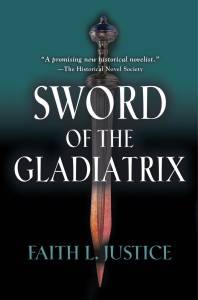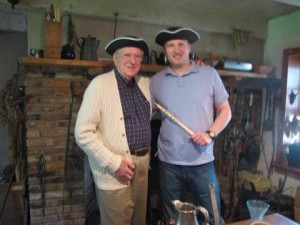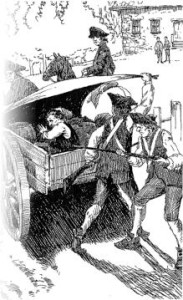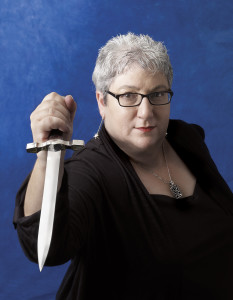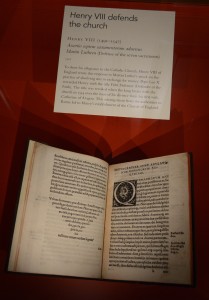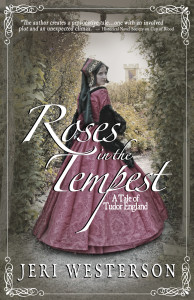 Relevant History welcomes alternate history author Alison Morton. Raised by a feminist mother and an ex-military father, it never occurred to Alison that women couldn’t serve their country in the armed forces. After six years, she left as a captain, having done all sorts of interesting and exciting things she can’t talk about, even now. Fascinated by the complex, power and value-driven Roman civilisation since childhood, she wondered what a modern Roman society would be like if run by strong women. Now, she lives in France and writes award-winning Roman-themed alternate history thrillers with tough Praetorian heroines—Inceptio, Perfiditas, Successio, and (her latest) Aurelia. To learn more about Alison’s books, check out her blog, and follow her on Facebook, Twitter, and Goodreads.
Relevant History welcomes alternate history author Alison Morton. Raised by a feminist mother and an ex-military father, it never occurred to Alison that women couldn’t serve their country in the armed forces. After six years, she left as a captain, having done all sorts of interesting and exciting things she can’t talk about, even now. Fascinated by the complex, power and value-driven Roman civilisation since childhood, she wondered what a modern Roman society would be like if run by strong women. Now, she lives in France and writes award-winning Roman-themed alternate history thrillers with tough Praetorian heroines—Inceptio, Perfiditas, Successio, and (her latest) Aurelia. To learn more about Alison’s books, check out her blog, and follow her on Facebook, Twitter, and Goodreads.
*****
“Only if you know your history well, can you attempt to alternate it.” Not a saying by anybody famous, but something I wrote five years ago in my first blog post about writing in an alternate timeline environment. And I still stand by it today.
My fourth Roma Nova alternate history thriller, Aurelia, out last month, is set in the late 1960s partly in an alternative Germany consisting of small states rather than one whole nation. Although Germany was the subject of my history masters’ degree, I had to research the real small states of a pre-unification Germany in some depth as well as the 1960s social revolution before I typed one single word.
What is alternate history?
 With history and science fiction as parents, alternate (or alternative) history stories are a type of speculative fiction set in a world where historical events have developed differently from the way they did in our timeline. What if Julius Caesar had taken notice of the warning that assassins wanted to murder him on the Ides of March? Or if Elizabeth I had married and had children to succeed her? If Washington hadn’t crossed the Delaware River on Christmas night in 1776?
With history and science fiction as parents, alternate (or alternative) history stories are a type of speculative fiction set in a world where historical events have developed differently from the way they did in our timeline. What if Julius Caesar had taken notice of the warning that assassins wanted to murder him on the Ides of March? Or if Elizabeth I had married and had children to succeed her? If Washington hadn’t crossed the Delaware River on Christmas night in 1776?
Modern alternate historical fiction favourites of mine include Robert Harris’s Fatherland, Keith Roberts’ Pavane, and C J Sansom’s Dominion, but alternate history itself stretches back a long way. Roman historian Livy writing in the 1st century AD suggests that the Romans would have beaten Alexander the Great if he had lived beyond 324 BC and turned west to attack the Roman Republic (Book IX, sections 17-19 Ab urbe condita libri [The History of Rome], Titus Livius). Louis Geoffroy’s Histoire de la Monarchie universelle: Napoléon et la conquête du monde (1812–1832) imagines Napoleon’s French Empire succeeded in invading Russia in 1811 and England in 1814, later unifying the world under Bonaparte’s rule.
What defines alternate history?
There are three key characteristics to alternate history stories. Firstly, the event that turned history from the path we know—the point of divergence, or PoD—must be in the past; in my Roma Nova series set in the modern period, the PoD was in AD 395. Secondly, the new timeline follows a different path forever—there is no going back. Thirdly, stories should show the ramifications of the divergence and how the new reality functions.
The world can partially resemble our timeline or be very different. Sometimes there are documented historical characters, sometimes entirely fictional ones or a mixture of both. In no case are alternate history stories parallel or secret histories such as The Da Vinci Code.
But is all alternate history credible?
Alternate history varies in “hardness,” based on how plausible the alternation is when measured against historical reality.
Type I, Hard Alternate History: Well-researched work based on historical sources and trends, and that projects changes that flow logically from the PoD. This follows strict standards in its plausibility. Most historical counterfactuals fall into this category.
Type II, Hard/Soft Alternate History: Usually well researched with historical logic and methodology, but which allows some escapist elements.
Type III, Soft Alternate History: Here, setting up a world that fits the writer’s creative objectives is more important than the setting’s alternate history. Research is minimal to moderate and plausibility will take a back seat.
Type IV, Utterly Implausible Alternate History: Works so implausible as to be effectively impossible. Often, authors prioritise their own ideology at the expense of research, historic details, or sensible logistics.
Type X, Fantastical Alternate History: In contrast with Type IV, these works are deliberately designed as pure fantasy.
Perception is, of course, subjective, but I’ve positioned my Roma Nova thrillers at the historical end of the alternate history scale, probably Type II above with elements of Type I.
World building
 If a writer sets the story in a different country, they can visit the places the characters would live in, smell the sea, touch the plants, walk under the hot blue sky, or freeze in a biting wind. Historical fiction writers can visit buildings and gardens, explore costume, watch or partake in reenactions. Tasting food cooked to Roman recipes, including the (in)famous garum fish sauce, was certainly an education for me! But inventing a country means their imagination has to spread wide and walk hand-in-hand with solid research. Humans are creative beings; we have all imagined alternative realities since we were children and that drives world building.
If a writer sets the story in a different country, they can visit the places the characters would live in, smell the sea, touch the plants, walk under the hot blue sky, or freeze in a biting wind. Historical fiction writers can visit buildings and gardens, explore costume, watch or partake in reenactions. Tasting food cooked to Roman recipes, including the (in)famous garum fish sauce, was certainly an education for me! But inventing a country means their imagination has to spread wide and walk hand-in-hand with solid research. Humans are creative beings; we have all imagined alternative realities since we were children and that drives world building.
No country can survive without a functioning government, an economic, social, and political system, food, law and order, and income. Readers and fans will expect the creator of an imagined world to have worked all that out and also be able to talk about every aspect from costume, social philosophy and weapons to food, transport and childcare provision. (Yes, I was asked about childcare in Roma Nova at the launch of my second book, Perfiditas!)
Plausibility and consistency are, as in all historical fiction, the key guidelines so that the reader is not lost or alienated. Local colour and period detail are essential, but only where necessary and when relevant.
Characters should act, think and feel like real people, whatever language they speak or however they’re dressed. The most credible ones live naturally within their world, i.e. consistently reflecting their unique environment and the prevailing social attitudes. But it makes a stronger story if the permissions and constraints of their world make additional trouble and conflict for them.
What use is alternate history?
Alternate history fiction enables us to explore the consequences of even a small change in history, sometimes known as the “butterfly effect” from chaos theory, or the “nail of the horseshoe” effect after the popular verse dating back to the 14th century. Further, it lets us speculate on transgressive, over-optimistic, morally controversial, or even frightening situations from the safety of our armchair. More than that, it allows us to ask “what if”, to exercise our imaginations and assess our modern situation in an entirely different light.
*****
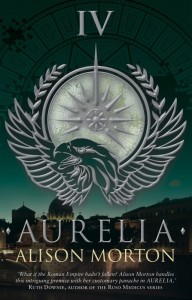 A big thanks to Alison Morton. She’ll give away a copy of Aurelia in either signed trade paperback form or .pdf ebook form to someone who contributes a comment on my blog this week. I’ll choose the winner from among those who comment by Friday at 6 p.m. ET. Delivery is available worldwide.
A big thanks to Alison Morton. She’ll give away a copy of Aurelia in either signed trade paperback form or .pdf ebook form to someone who contributes a comment on my blog this week. I’ll choose the winner from among those who comment by Friday at 6 p.m. ET. Delivery is available worldwide.
**********
Did you like what you read? Learn about downloads, discounts, and special offers from Relevant History authors and Suzanne Adair. Subscribe to Suzanne’s free newsletter.


